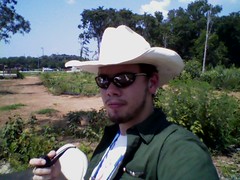AERO 3170 Accident Investigation Paper
Chris Remboldt
November 12, 2009
Airline
NTSB Identification: DCA83AA029
Scheduled 14 CFR REEVE ALEUTIAN AIRWAYS
Accident Occurred June 8, 1983 at Cold Bay, Alaska
Probable Cause Approval Date: 2/23/2001
Aircraft: Lockheed L-188C Electra, registration: N1968R
Injuries: 15 Uninjured
The Near Disaster of a Reeve Aleutian Airways Lockheed L-188 Electra
On the 8th of June, 1983 a Reeve Aleutian Airways Lockheed Electra lost a propeller in midair, resulting in substantial damage to the aircraft's lower fuselage and near-complete loss of control surface authority as well as total loss of throttle control. The crew successfully diverted to Anchorage, Alaska and everyone aboard escaped injury.
Probable Cause
The NTSB finds the probable cause of the accident to be the result of the number four propeller separating from the engine for unknown reasons. The exact cause of the separation was not possible to determine, as the prop fell into the ocean and was not recoverable.
Pilot Experience
The 54 year old captain had 13,874 flight hours, and a considerable 5,711 in the Electra. He possessed a Multiengine Instrument Airline Transport rating. He had flown the Electra 133 hours in the previous 90 days.
Weather at the Time of the Accident
The weather was completely clear, with 50 statute mile visibility. The accident happened during the daytime.
History of the flight
The Lockheed Electra roared down the runway out of Cold Bay, Alaska and eased itself skywards. The landing gear retracted into the wheel wells as the large four-engine, 69-seat turboprop airliner rolled onto its heading towards the warmer southern climes of Seattle, Washington. The plane had practically just gotten out of the shop; the last continuous airworthiness inspection had been carried out 8 flight-hours ago. It was a rather well-worn bird, with nearly 33,000 hours on the airframe. What was about to take place would be an incredible test of the crew's raw flying skills and creative problem-solving abilities. As the flight received clearance to climb from FL190 to their cruise altitude of FL250, the pilots noticed a strange vibration. They made some unsuccessful attempts to isolate the problem, and decided to send the flight engineer aft to observe the engines and to join the flight attendant in looking for anything out of the ordinary. He returned to the cockpit and reported that nothing looked out of place. The flight attendant then headed to the cockpit to report that she also noted nothing out of the ordinary. As she reached the door, the vibrations suddenly changed and increased in intensity. The flight attendant turned back to look out the right side windows just in time to watch the propeller on the number four engine completely separate and narrowly miss the number three engine before it slashed through the bottom of the fuselage. The cabin immediately lost pressure, and the resulting chaos caused the cabin floor to cave in, completely jamming all of the control cables and simultaneously disconnecting the throttle levers. The crew immediately attempted an emergency descent, then realized that the plane was completely unresponsive to their commands. After what must have been some very long, nerve-wracking moments, they found that they were able to descend by shutting down the number two engine and lowering the landing gear and climb by retracting the gear. The autopilot was also able to provide minimal control, and the crew diverted towards Anchorage, Alaska. After one aborted approach, the crew touched down nose gear first at high speed and the pilots immediately shut down the two remaining engines, resulting in a loss of hydraulics. The aircraft rolled down the runway, and eventually slowly departed the tarmac with the brakes on fire. The fire was extinguished quickly by fire crews that were standing by, and the passengers and crew deplaned without any further incident or any kind of injury.
Accident Survivability
Any case of complete or near-complete loss of control surface authority is going to be difficult to survive. Unorthodox means of control must be implemented, such as the lowering of the gear to control altitude. The famous United 232 accident is another case of propulsion system-induced loss of control authority. The passengers on that flight were, however, rather less fortunate than the souls on board this Electra. Also, any instance of multiengine propeller runaway will be incredibly dangerous due to the random and often disastrous path the separated piece or pieces take. There was also the decompression, which although the report does not state it to be so, was almost certainly rapid. With unresponsive controls, the crew was not able to perform a expedient emergency descent to a warmer and more oxygen-rich altitude. This problem combined with everything else would probably lead any reasonable observer to conclude that the accident was completely unsurvivable. Yet, against all odds, all five crew and ten passengers stepped off the plane in Anchorage with no injuries whatsoever.
Technology Involved
While the report is ambiguous as to how exactly it saved the day, the autopilot was somehow a large factor in controlling the heading of the crippled Electra.
Dispatcher/ATC
Air Traffic Control, while unmentioned in the report, was definitely instrumental in clearing the Electra for an emergency landing at Anchorage. They also had to call in the fire and rescue crews, which were very timely in extinguishing the brake fire before it spread. By all indications, ATC was as beneficial as they could have possibly been during the event.
Lessons Learned and Practical Application
This accident definitely serves as a good example of a disaster averted through ample application of the “right stuff.” Yet this was very nearly a terrible disaster. Here follows a list of lessons learned and their practical application.
First, this all would probably never have happened if the elusive root cause of the initial vibration had been detected and addressed. This seems like a maintenance-side issue at first glance, but the pilots could also have possibly detected either wear or an oil leak on the propeller hub, or even a simple nick in the propeller. "There have been cases where cracks caused a portion of the propeller to separate, the propeller being so out of balance that it shook the engine off the engine mount in a matter of seconds" (Love, 1995, p. 4). Lesson learned: If you are responsible enough to take a plane full of people in the air, then you also are responsible for going over each and every system during preflight inspections, whether it be while the plane is cold or during a pre-takeoff test of engine and propeller functions. To quote a pilot and writer for the AOPA, "After any maintenance, an incomplete exterior and interior preflight inspection of your aircraft systems can endanger your life. It is often difficult to be thorough because your normal check list procedure is inadequate" (AOPA Pilot Magazine, March 2009)
Second, a flight like this is never so important that an immediate return to the airport to avert risk is too inconvenient. The report does not specify how much time had elapsed between the crew noticing the vibration and the catastrophic failure of the propeller system, but it was enough to have at least turned back to Cold Bay. The flight may have been able to return for inspection by mechanics, who would have likely found the source of the problem, which is forever a mystery. Lesson learned: While the pilots are now heroes in anyone's book, they probably were suffering from a good case of an invulnerability attitude before the propeller broke off and suddenly snapped them into an obvious emergency.
Third, this flight should serve as an example of perseverance. If the crew had taken an attitude of resignation and not experimented with the landing gear lever and the autopilot, then they would never have made it to safety. Lesson learned: Never give up, no matter how dire the emergency.
References
Lewis, Rex. (2009). Never Again Online: An Inadequate Preflight Inspection Can Kill. AOPA Pilot Magazine, March, 1 page.
Love, Michael C. (1995). Better Takeoffs and Landings. United States: McGraw-Hill.



.jpg)




